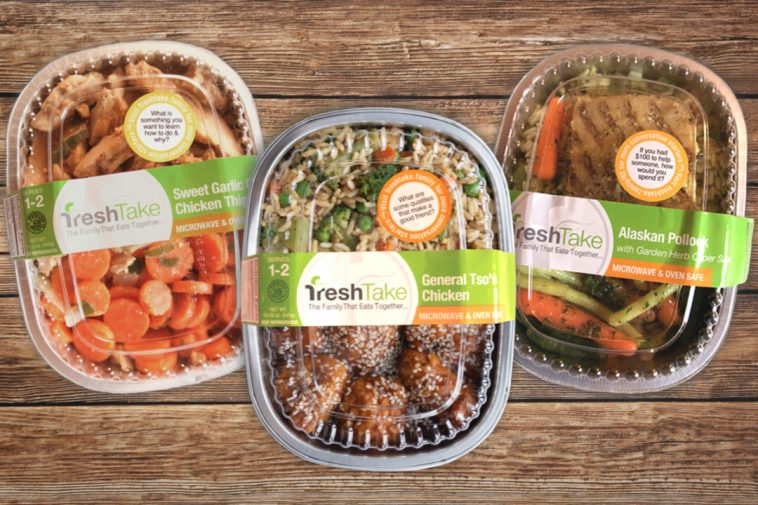Our lives in the modern world have become extremely fast-paced. In today’s world, time is of the essence, and everyone appears to be preoccupied with one or more tasks, making it difficult for many people to go grocery shopping or prepare a healthy nutritious meal from scratch.
This has resulted in a significant increase in demand for ready-to-eat frozen food products that only require a few minutes of heating before they are ready to eat. Be honest with yourself: how often do you throw frozen chicken strips or vegetable spring rolls in the air fryer after a long day at work? It will undoubtedly be more than a couple of times per week.
The global market for ready-to-eat frozen food was estimated to be worth $280 billion. Convenience was cited as a major factor by younger generations such as millennials and Generation Z when purchasing frozen food.
Frozen food purchases increased during the pandemic as people tended to stock up heavily on non-perishable goods.
Frozen food manufacturers take pride in the fact that they use natural ingredients and fewer preservatives. However, we will discover in this blog how harmful frozen foods can be to our health and the environment in the long run.
-
High Sodium Content
Ready-to-eat frozen foods have a high sodium content, which can be harmful to the body. Excess sodium in your diet can cause blood vessels to stiffen, resulting in high blood pressure, a heart attack, or a stroke. It can also harm your kidneys, bones, and aorta.
According to various studies, ready-to-eat frozen foods contain 30-40% more sodium than regular foods, making it critical to read the nutritional label of frozen foods before purchasing them.
-
Preservatives & Chemicals
Ready-to-eat frozen foods may contain a variety of preservatives and chemicals to prevent spoilage. Preservatives can have long-term negative effects on one’s health by causing a slew of health issues.
Bisphenol-A (BPA), Sodium Benzoate, Sodium Nitrite, and Hydrogenated oils are the most used preservatives and chemicals in frozen food.
We found evidence that eating frozen food high in preservatives can cause allergic reactions, gastrointestinal problems, hormonal imbalance, an increased risk of certain cancers, hyperactivity, and ADHD.
(Mwale, Mary. “Health Risk of Food Additives: Recent Developments & Trends in the Food Sector” Intech Open, n.d., www.intechopen.com/online-first/85779)
-
Packaging Waste
Ready-to-eat frozen foods necessitate massive packaging, filling our landfills with non-biodegradable waste that can take more than a century to decompose.
Plastic packaging is one of the most common types of packaging used for ready-to-eat frozen foods and can contribute to plastic pollution in the ocean and on land.
The production, transportation, and disposal of packaging for ready-to-eat frozen foods contributes to greenhouse gas emissions, which contribute to climate change.
The production of packaging for ready-to-eat frozen foods requires the use of finite resources, such as oil, which are being depleted at a rapid rate.
-
Improper Heating/Thawing
Heating or thawing frozen food at the incorrect temperature can foster the growth of bacteria such as E. coli, Listeria, and Salmonella.
Some bacteria can produce toxins that are not destroyed by cooking, leading to food poisoning even if the food is thoroughly reheated. Bacteria from raw food can spread to ready-to-eat food during thawing or reheating.
To avoid these risks, it is important to reheat the frozen food at the right temperature to ensure all bacteria is destroyed (165°F for poultry, 145°F for beef, pork and seafood)
-
Nutrients loss
There is a high possibility that frozen food items will lose nutrients over time, especially during the reheating or thawing process.
Vitamins C and B, for example, are heat and light sensitive and can degrade during the reheating or thawing process.
Minerals like iron, calcium, and potassium can leach out of food during cooking or reheating, particularly if it is boiled or overcooked.
-
Lack of freshness
Although frozen food contains a lot of preservatives and artificial flavors to make it taste good, it pales in comparison to the taste of a freshly cooked meal.
Freezing and thawing can affect the flavor of food, making it taste bland, unappetizing, or even off. Frozen food can become dry, tough, or chewy after thawing, and can lose its texture and tenderness.
Conclusion
To conclude, while eating ready-to-eat frozen food is certainly more convenient and less expensive than preparing a meal from scratch, however, the long-term consequences can be disastrous.
This blog is not intended to discourage you from eliminating all frozen foods from your diet. Frozen foods are fine on occasion, but they should never be a staple in your diet, and we should strive for a balanced diet that includes a variety of fresh and minimally processed foods.
It is critical to remember to choose only high-quality frozen options and to incorporate a variety of fresh, whole foods into our diets.
How often do you eat ready-to-eat frozen food in a week?



GIPHY App Key not set. Please check settings